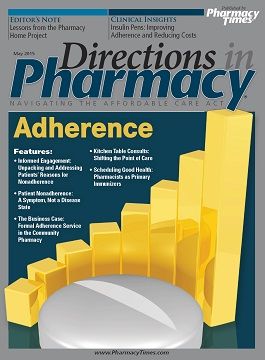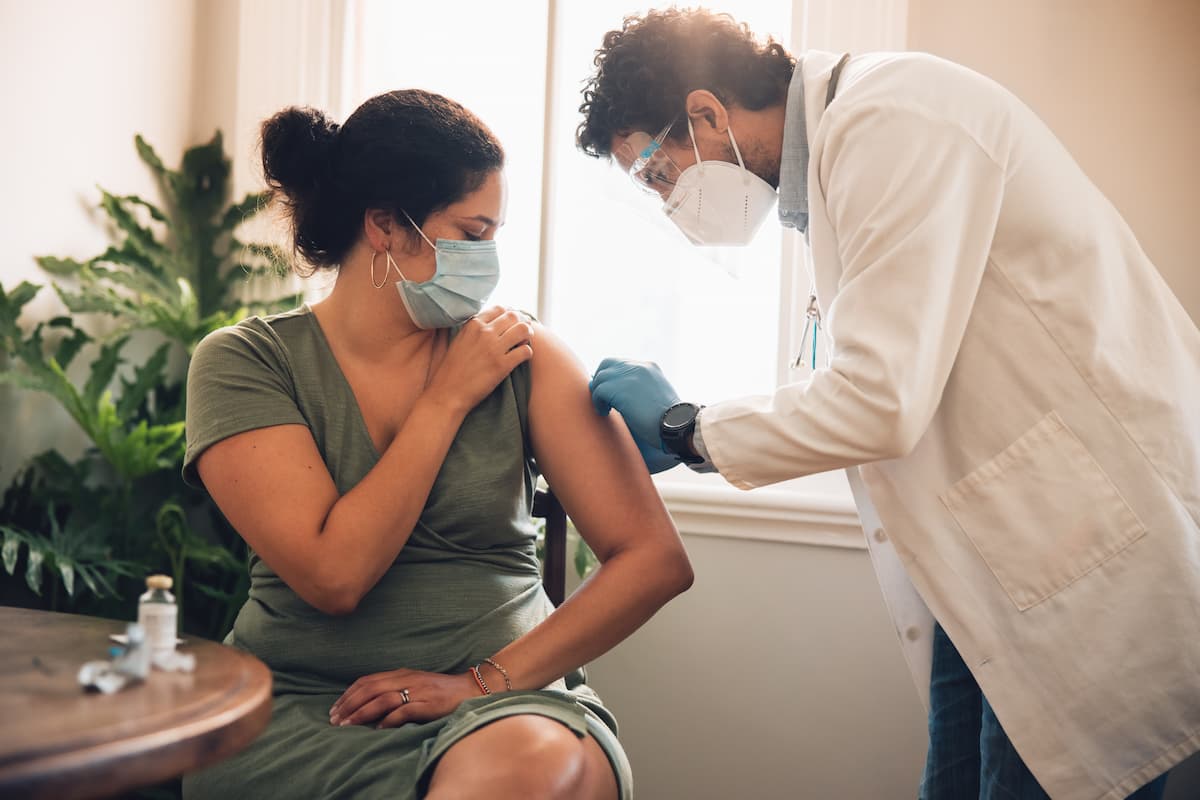Publication
Article
Pharmacy Practice in Focus: Oncology
Scheduling Good Health: Pharmacists as Primary Immunizers
Author(s):
Pharmacists can play an important role in improving immunization rates.
Pharmacists can play an important role in improving immunization rates.
Immunizations have been recognized as one of the top public health achievements of the past century, having decreased the rates of many diseases.1 Smallpox has been completely eliminated, and there have been only a handful of US cases of diphtheria in the past few decades, for example.2,3 The fact that these diseases are no longer prevalent may be contributing to suboptimal immunization rates in the US population. Adult immunization rates lag behind childhood immunization rates, possibly because vaccines have been traditionally considered a pediatric intervention. Vaccine series completion data are even worse.4,5 Only 83% of children have received the full series of diphtheria, tetanus, and pertussis shots.4 In the adult population, rates for vaccine series completion are even lower, with just over 35% of the adult population having completed the hepatitis B vaccine series.5 State and local data show significant geographical variation in vaccine rates. A notable example of a recent vaccine-preventable disease outbreak was the outbreak of measles that began in California, where estimates of measles vaccination rates ranged from 50% to 86%.6
State laws permit all pharmacists to administer at least some immunizations to patients, and the Centers for Disease Control and Prevention (CDC) recognizes pharmacists as key contributors to immunization efforts. The CDC notes that pharmacists can offer to administer vaccines to their patients and also provide education about needed vaccines that may be out of the pharmacist’s scope of practice.7
A key factor in pharmacists improving immunization rates—particularly vaccine series completion—involves reframing how pharmacists view themselves in the scope of immunization providers. Currently, many pharmacists may feel like they are “back-up” immunizers, giving vaccines to patients only when other sources are unavailable. However, given pharmacists’ accessibility, endorsement by organizations such as the CDC, and because a patient may see a pharmacist more regularly than any other health care professional, pharmacists should consider themselves a primary source of immunizations.
A pharmacist routinely feels empowered to assess a patient’s medication regimen; the same should be true for vaccinations. Marketing for chain pharmacies has promoted the community pharmacy as a place to get an influenza vaccine. The next step would be to similarly promote other vaccines and vaccine series. Pharmacists’ expertise can guide patients to the best use of and proper adherence to their therapies. This holds true for immunizations as well, although the link between immunizations and adherence may often be overlooked. Pharmacists in all states can immunize adults, contributing to improvement in adult vaccine rates. In states with no age restrictions, pharmacists can serve as another source for pediatric vaccines. Vaccine series completion provides another opportunity for pharmacists to improve vaccination rates.
In most states, pharmacists immunize patients under protocols, whether it is an agreement with a specific physician or a statewide protocol. Pharmacists practicing in California have a broader scope of immunization practice and can contribute to vaccination rates and series completion for a wide range of patients. In 2013, legislation passed that allows pharmacists to initiate and administer any vaccine recommended by the Advisory Committee on Immunization Practices to patients at least 3 years of age. They have the leeway to assess a patient’s immunization status and provide any needed vaccines. The law is currently undergoing regulation by the California Board of Pharmacy; however, one could imagine pharmacists developing business models focusing on vaccines. These pharmacists would have both a fiduciary and a financial incentive to ensure a patient completes a vaccine series.
A contemporary issue that pharmacists may face in promoting immunizations to their patients is the matter of vaccine hesitancy. Vaccine hesitancy may lead to avoidance of all vaccines, but in some cases, it affects vaccine adherence as patients select which vaccines they or their dependents will receive. Pharmacists should educate themselves on common misconceptions about vaccines so they can have conversations with vaccine-hesitant patients and parents. In some cases, vaccine-hesitant patients may not be open to a discussion of the evidence behind immunizations, but there are times when education can make a difference in the decision to vaccinate and adhere to the recommended immunization schedule.
Pharmacists have long been recognized as the most accessible health care professionals, with an estimated 90% of Americans living within 5 miles of a pharmacy. The simplest way that pharmacists can impact immunization rates is through their accessibility—a patient can walk into most pharmacies without an appointment and receive a vaccine. Pharmacies are often open in the evenings and on weekends when patients are more likely to be off of work. Additionally, pharmacists can use immunization reminders integrated into electronic health records or dispensing systems to prompt initiation and completion. An argument could be made that immunization status should be assessed at every encounter, making it a standard of pharmacy care.
Adherence and immunizations may not always link themselves immediately in a pharmacist’s mind, but the 2 concepts are both essential components of a patient’s therapeutic plan. It is important that pharmacists evaluate not just whether or not a patient has received a certain vaccine, but whether the patient received all recommended doses that may be part of a series. Pharmacists are accessible, capable immunizers who may merely need to reimagine their role in promoting adherence to immunizations.
Sarah McBane, PharmD, CDE, BCPS, FCCP, is health sciences associate clinical professor at the Skaggs School of Pharmacy and Pharmaceutical Sciences of UC San Diego. She earned her PharmD at the University of North Carolina at Chapel Hill.
References
- Centers for Disease Control and Prevention. Ten great public health achievements—United States, 1900-1999. MMWR. 1999;48:241-243.
- Centers for Disease Control and Prevention. Smallpox fact sheet. CDC website. December 30, 2004. http://emergency.cdc.gov/agent/smallpox/overview/disease-facts.asp.
- World Health Organization. WHO vaccine-preventable diseases: monitoring system. 2014 global summary. WHO website. December 5, 2014. http://apps.who.int/immunization_monitoring/globalsummary/incidences?c=USA.
- Elam-Evans LD, Yankey D, Singleton JA, Kolasa M; Centers for Disease Control and Prevention. National, state, and selected local area vaccination coverage among children aged 19-35 months—United States, 2013. MMWR. 2014;63(34):741-748.
- Williams WW, Lu PJ, O’Halloran A, et al. Noninfluenza vaccination coverage among adults—United States, 2012. MMWR. 2014:63(5);95-102.
- Majumder MS, Cohn EL, Mekaru SR, et al. Substandard vaccination compliance and the 2015 measles outbreak. JAMA Pediatr. 2015;169(5);494-495.
- US Department of Health and Human Services. Letter to pharmacists and community vaccinators. June 26, 2012. www.pharmacist.com/sites/default/files/files/http___www_pharmacist_com_AM_Template_cfm_Section%3DPharmacy_News%26Template%3D_CM_ContentDisplay_june_26.pdf.

Newsletter
Stay informed on drug updates, treatment guidelines, and pharmacy practice trends—subscribe to Pharmacy Times for weekly clinical insights.

FDA Grants Full Approval to mRNA-1273 COVID-19 Vaccine in Children at Increased Risk





